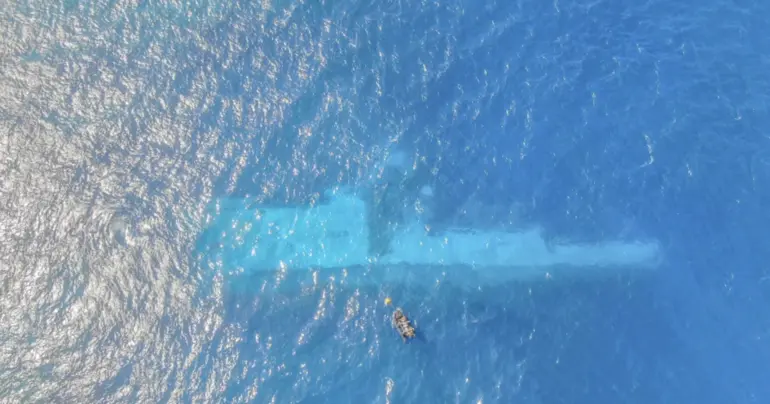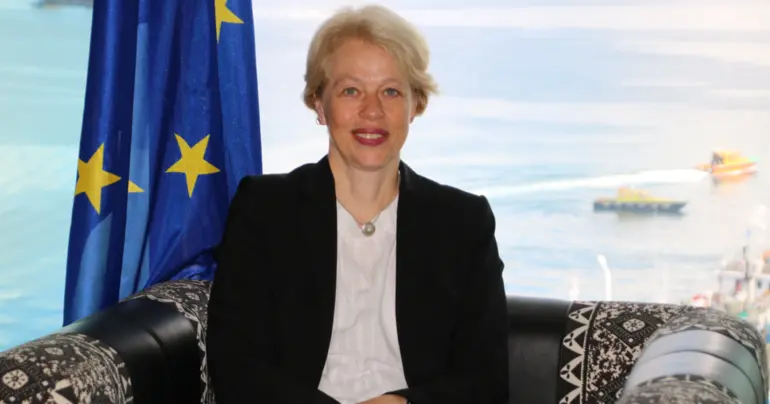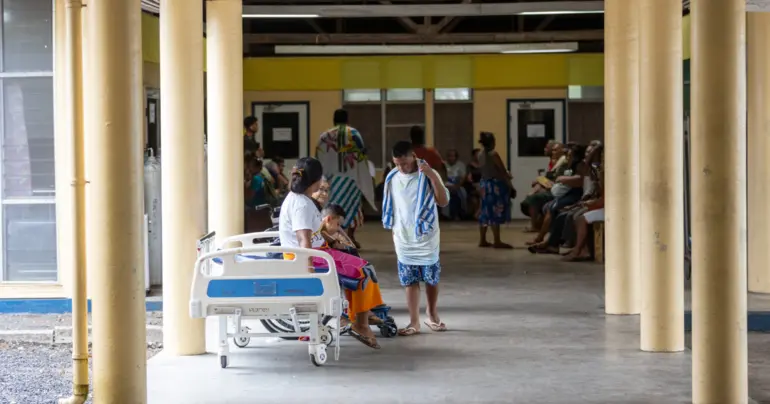A loss and damage fund: two big challenges
One of the biggest changes in how global climate finance is conceptualised and delivered is currently being considered by a select, UN-convened committee that includes Australia. A key outcome from the UN Framework Convention on Climate Change (UNFCCC)’s 27th Conference of the Parties (COP27) meeting late last year in Egypt was an agreement to establish a new loss and damage fund to assist “developing countries that are particularly vulnerable to the adverse effects of climate change”.
A dedicated loss and damage fund has been a longstanding call from vulnerable countries, including Pacific countries, and several donors have already committed funding. Its establishment would add a third pillar to the global climate finance landscape – mitigation (funding to reduce emissions), adaptation (funding to minimise the negative impacts of emissions) and loss and damage (funding to address the harms caused by emissions).
The detailed arrangements for the fund will be considered by the COP28 meeting in the United Arab Emirates later this year. In the interim, consultation and technical work is being undertaken by a transitional committee of developed and developing country UNFCCC signatories. Australia, which supported the COP27 outcome, joins 23 other countries, including both the US and China, on the committee.
The government has stated that it is “advocating for the unique position and needs of our Pacific family” in the discussions. There are no Pacific Island countries represented on the committee. The committee is now grappling with a range of complex issues associated with standing up a new financing mechanism. This blog post focuses on two big challenges which I argue will be critical to the viability of a dedicated loss and damage fund – maximising additionality, and minimising fragmentation.
The first big challenge concerns additionality – that is, ensuring that the fund is genuinely able to meet “the urgent and immediate need for new, additional, predictable and adequate financial resources”, and ensuring that existing development and climate financing for other priorities is not diverted. In the case of loss and damage, its very nature – a recognition of climate change’s incurred costs – means that, unlike areas such as mitigation which could feasibly receive at least some funding from private investors, it will have to come from the governments of wealthier countries. Which very likely means aid money.
Ideally, if aid were to be used to pay for loss and damage funds, donors would dedicate and quarantine “new and additional” official development assistance (ODA) for this purpose. But while global aid has increased in the last several years, most of these increases have been for specific, immediate crises – the COVID-19 pandemic in 2020 and 2021, Russia’s invasion of Ukraine in 2022. There is a real risk that supposed “new and additional” funding for loss and damage won’t be new and additional at all – it will simply be drawn from existing aid budgets and taken from other areas. In 2021, the proportion of global aid allocated to climate change from the OECD club of donors actually declined.
This raises the question of whether there are any alternatives to using ODA to generate additional loss and damage finance.
One potential option could be greater use of rich countries’ Special Drawing Rights (SDRs), a form of reserve currency issued by the International Monetary Fund (IMF). While many G20 countries, including Australia, have redistributed some of their SDRs to poor countries through IMF trust funds, options to also use SDRs for loss and damage have been explored by Mark Plant from the US-based Center for Global Development. Plant argues that while the reserve asset strictures governing SDRs make their use challenging, “SDRs could be useful for financing some part of L&D [loss and damage] … within [a] narrowly defined set of procedures and institutions”. This could include the use of SDRs to mobilise additional finance via intermediaries like the World Bank or regional development banks.
A more direct mechanism would be the use of debt forgiveness as a form of loss and damage finance. With many vulnerable countries such as Pakistan now facing severe fiscal pressures, “debt-for-climate” swaps that involve providing debt relief to offset loss and damage costs, particularly in the wake of climate-induced disasters, could be an alternative means of generating additionality. Again, there are complexities and trade-offs, not the least of which would be getting consensus around burden share both among and between public (including China) and private creditors. And debt relief can be counted as against donors’ ODA budgets, diluting its additionality element.
International tax and transfer mechanisms present a third potential option, and the one that would generate the most additionality. Short of a global carbon tax, the more viable proposals include levies on international container shipping, financial transactions and/or airline travel, none of which would have to be universally applied to generate significant revenue. The proceeds of these levies could either be used directly to meet assessed costs via the new fund, or pooled by governments to help purchase tailored insurance products for climate-vulnerable nations. The difficulty here will be to ensure that these levies don’t have unintended consequences for those vulnerable countries that they are trying to assist, for example, by impeding tourism revenue.
A second challenge facing the new fund will be minimising fragmentation. Like health, global climate finance is now dispersed across dozens of multilateral and bilateral providers, each with their own requirements, procedures and processes. This places significant burden on potential recipients, particularly smaller countries who are often the most vulnerable but also can find it the most difficult to access finance.
In order to prevent this, the committee should recommend that loss and damage finance be delivered through government systems and budgets as much as possible. This would be appropriate if the fund is to be basically compensatory in nature. This could be achieved through a recipient accreditation system based on existing public expenditure assessments compiled by institutions such as the World Bank. Where there are genuine fiduciary concerns, alternative local partners could be identified and accredited.
Another option to help minimise fragmentation would be to house the loss and damage fund within an existing institution, such as the Global Environment Facility or the Green Climate Fund. This would avoid the upfront costs associated with establishing a new institution, minimise potential duplication, and would recognise the interlinkages between mitigation and adaptation and loss and damage.
While these and other proposals to minimise fragmentation might seem intuitive, they would still prove difficult in the negotiations. There are likely to be pressures for sectoral and functional carve-outs, and to increase political visibility within the UN system through a dedicated, standalone agency with its own bureaucracy. Donors could also be tempted to over-engineer the fund, and/or seek to favour certain recipients for geopolitical reasons. This should be resisted for the sake of both effectiveness and efficiency.
Beyond the two issues discussed here, there are multiple challenges with which the diverse membership of the committee will have to grapple – defining “loss and damage”, agreeing to the governance of the fund, and establishing clear eligibility criteria. Australia faces an extra degree of difficulty in attempting to square the interests of its Pacific neighbours in an ambitious outcome with the government’s self-imposed budget constraints and the domestic politics of climate change. Exploring alternative ways to both maximise the additionality of loss and damage finance and minimise fragmentation could help overcome these obstacles.











